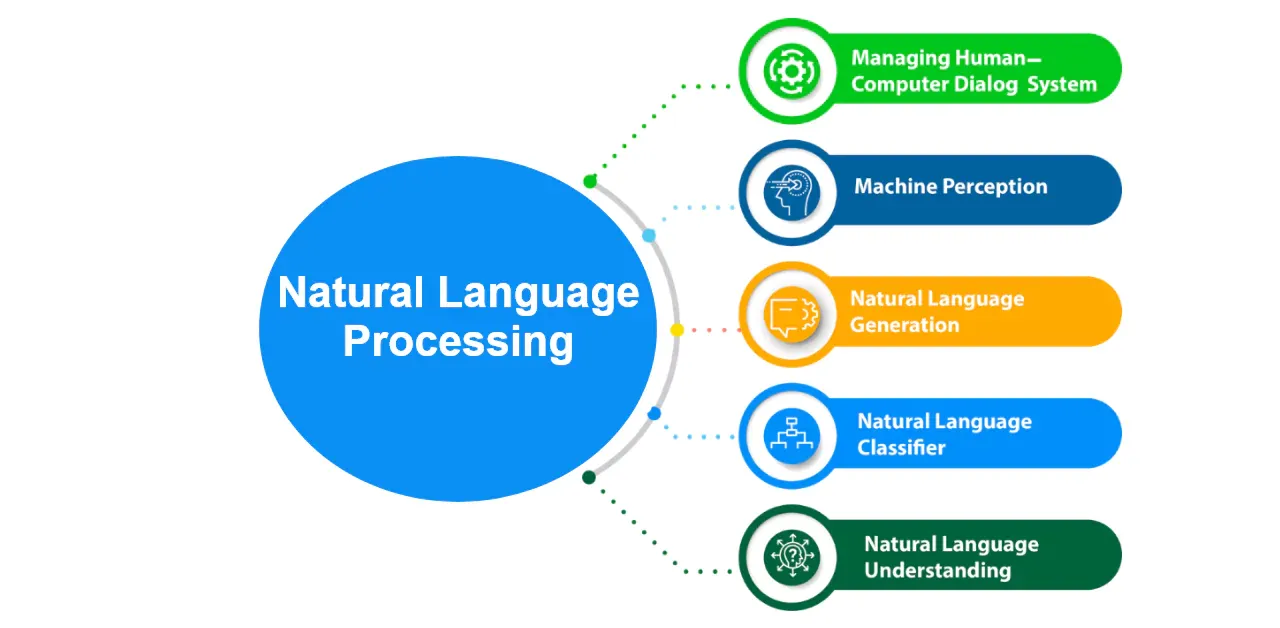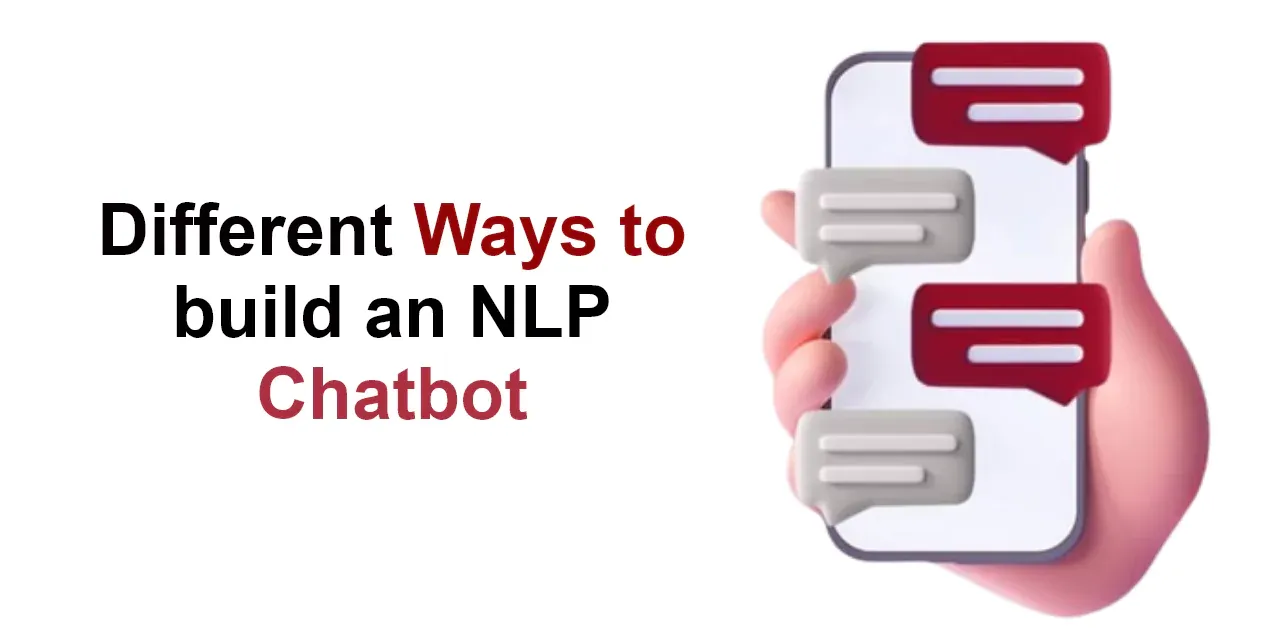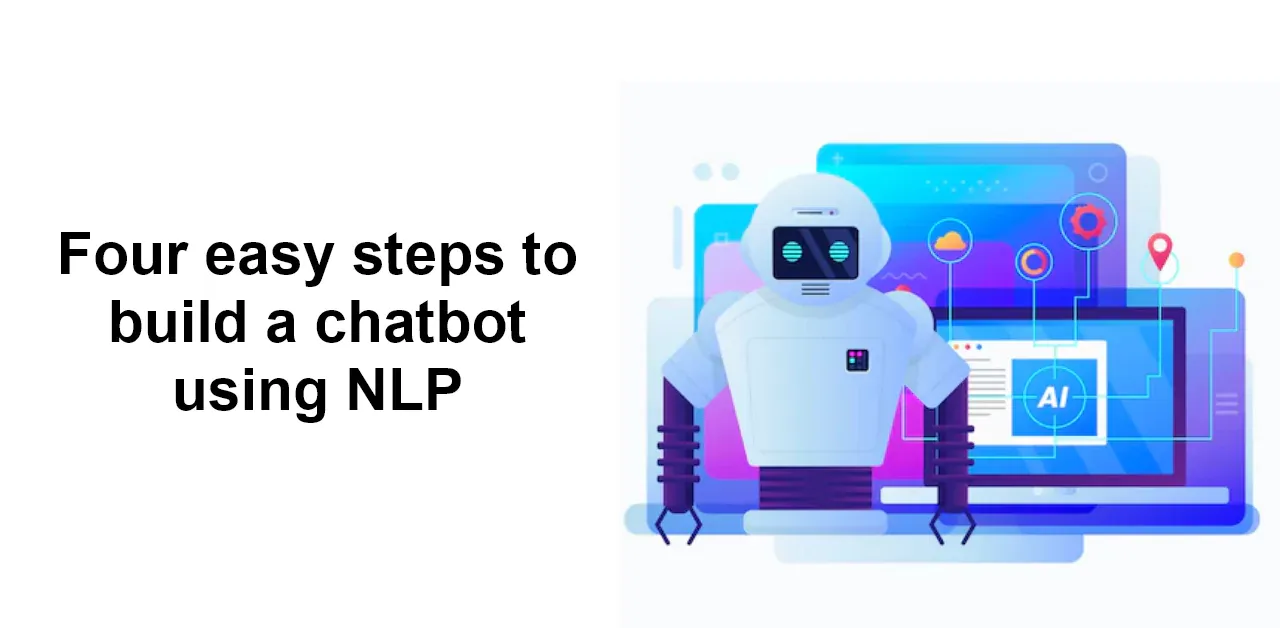In today's business market, chatbots play a critical role in determining the future of your business.
A chatbot is a computer program that stimulates and processes human conversation, thus enabling humans to interact with digital devices like real persons. Chatbots can be simple programs that answer a simple query with a short response or a sophisticated digital assistant giving personalized information they gather and process from the customers.
But it is essential to know that when creating a chatbot, one of the critical parts is Natural Language Processing, which helps the chatbot to understand what the user wants and takes action accordingly. It is crucial to building a chatbot using NLP for its proper functioning.
In this blog, we will learn what NLP is, how to build an NLP chatbot and the steps you need to follow to make one for yourself.
So, are you excited? Let's go!
What is Natural Language Processing (NLP)?

Natural language processing, or NLP, is the power of a computer program to understand and comprehend human language the way it is spoken and written - i.e., the natural language.
Natural language processing is more than 50 years old and has its root in linguistics. Now it is a component of Artificial Intelligence. It has a variety of applications in different areas like Medical Research, search engines, and business intelligence staff. It helps computer programs translate text from one specific language to another, reply to spoken commands, and summarize large volumes of text in minimum time.
NLP is primarily used in voice-operated GPS systems, customer service chatbots, digital assistants, speech-to-text dictation software, and many more. But it plays the most crucial role in business solutions that help streamline business operations and increase employees' productivity.
Different Ways to build an NLP Chatbot

An NLP chatbot can be built using Custom Chatbot Development and a Readymade solution. Both have their own positive and negative sides. Let's look at them in detail-
1. Custom chatbot development
You can create a sophisticated chatbot with its API integration and can treat a solution with a set of features that will fulfill your business needs. A custom chatbot service will help you personalize your chatbot and add features specifically designed for your benefit. However, there are pros and cons to using a custom chatbot development method.
Pros of choosing Custom Development
- It allows you to create your chatbot according to your own needs using NLP. Thus you can create a unique chatbot solely to serve your business purpose. There are no restrictions; you must go through the discovery phase, learn more about your target audience, and select the best feature for your chatbot.
- It allows you to choose a team that has expertise in a specific Technology or software. It will help you to get assistance in selecting your target goals as the experts would be able to create your chatbot software precisely as per your requirement.
- When you go to custom development for creating a chatbot, they not only care about developing a suitable chatbot for you but also ensure that your chatbot is well maintained in the future. This approach helps to ensure that your chatbot will be bug-free without any disturbance, even after upgrading.
Cons of choosing Custom Development
- It is a time taking process because once you start developing a chatbot, it will take time accordingly. It depends on how skilled the developers are. Typically developing a chatbot requires a minimum of a few hours to several weeks.
- It is a bit costly because when you choose a custom development option, each feature of your chatbot costs separately. It will, in turn, raise the cost of creating a chatbot. If budget is not a factor, you can go for custom development.
2. Readymade Solutions
You can use this solution if you do not require complicated and sophisticated chatbot software. This platform allows you to make your chatbot by yourself with minimum hassle. But it also comes with some positive and negative factors.
Pros of using readymade solutions
- It is the best platform for you to create your NPL chatbot. It comes with readymade tools that make your task a lot easier, and you can use them efficiently. But the idea needs the resources to write codes for your chatbot.
- Most readymade platforms give you built-in integrations of messaging platforms like Messenger, Telegram, and Skype, as well as other third-party services for payment gateways. You don't have to worry about integrations if you create your NPL chatbot using readymade solutions.
- Readymade platforms come in a variety of price ranges. You can easily find a chatbot-building platform with budget-friendly usage prices.
Cons of using readymade solutions
- The readymade platform only offers you a few functionalities. The readymade tools provided by the software for building your chatbot come with a few basic and simple features that are just enough to fulfill your basic needs.
- You do not get enough customization freedom when you use a readymade solution to create your NLP chatbot. There are a lot of functionality restrictions in the readymade tools that can restrict you from adding features for extending the functionality of your chatbot.
Four easy steps to build a chatbot using NLP

Step 1: Analyse and create the business logic of the client
The primary step to start building a chatbot using NLP is to analyze the needs of the business house for which you are making a chatbot. In this step, the developer's team must understand the client's need for nice business logic. For this, the team needs to study the competitive market, go to a discovery phase, and determine the core features required to create the chatbot. After doing the research, the business logic needs to be made for the future product's first step.
Step 2: Choosing the right channel and Technology stack for your chatbot.
Using the right technology and channel while creating a chatbot is essential. It mainly depends on the type of chatbot that you are creating. If you are creating a voice chatbot, it is advised to use the Twilio platform as your base channel. But if you are making a text chatbot, it is better to use telegram, Viber, or Hangouts as your base channel. The type of chatbot determines the track you should be using.
Along with creating channels, there are Technology stacks used to develop chatbots. Some of the most popular and commonly used technologies are as follows.
- Python- It is one of the most popular programming languages used for building a chatbot's architecture.
- Twilio- this helps software developers develop programs that can receive phone calls and text messages and perform other communication functions with its web service APIs.
- Pandas- this is mainly a software library created for the Python programming language. It is used for data manipulation and analysis.
- SpaCy- this is an open-source software library that helps in advanced natural language processing.
- Telegram, Viber, or hangout API- they are mainly used to connect the chatbot to messengers or websites.
Step 3: Developing the chatbot and connecting with NLP
There are two steps for the creation of a machine-learning chatbot. The first step involves developing the client-side chatbot and then connecting it to the provider's API like Telegram, Viber, etc. After completing this step, the next thing is to add the NLP to the chatbot. It is done by connecting chatbots to artificial intelligence. Once the NLP gets associated with the chatbot, you are ready to test the final product.
Step 4: The final testing
After creating the bot, you can now start asking questions to the bot you have taught. You can use manual testing to check every corner of a chatbot. It helps you get a clear idea about how your NLP chatbot works and which areas need to be fixed. Chatbots that are created using artificial intelligence attract more users as well as save a lot of time. They also help us to grow the site and attract more customers.
Conclusion
NLP chatbots can be a great use to save your clients from confusion or frustration by directly asking them what they want. Incorporating an NLP chatbot into your business can help you in a lot of ways to attract more customers and receive more business growth in the future.
But if we measure the necessity of an NLP chatbot, it is not the best option for easy use. Moreover, if an NLP chatbot is misused, it can lead to total confusion and create a massive loss for your business. To use an NLP chatbot, you must be aware of its proper guidelines to avoid making a mess.
This blog has discussed NLP and the different ways to create an NLP chatbot. We have also shared the four simple steps you need to follow to make your NLP chatbot.
If you have any queries regarding the NLP chatbot or how to create it, drop a comment below without hesitation. We are always here to help.
Also, if you are looking for good customizable and affordable chatbot-creating software, kindly check out the features of Botpenguin!

